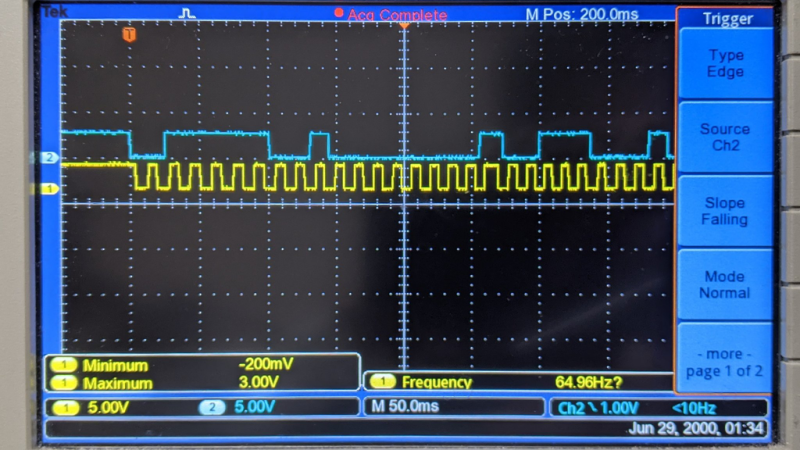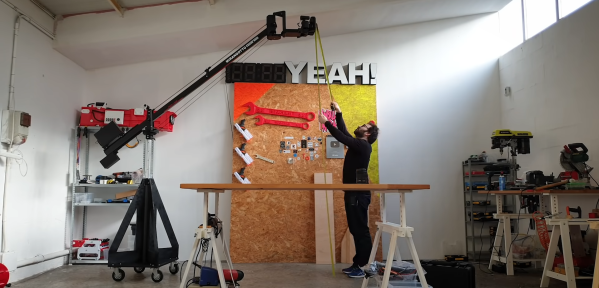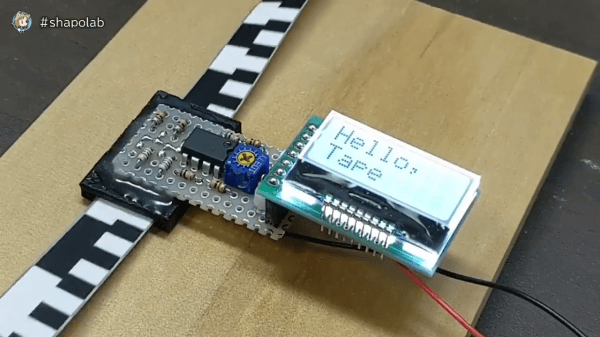We’re not quite sure what drove the development of this project, but [shapoco] has put together an intriguing device that reads I2C signals (Japanese Twitter link) which have been printed as black and white rectangles on paper tape. He wrote a program that prints an I2C byte stream onto strips containing the SCL and SDA signal patterns. Once printed, you cut the strips from the paper and glue them together into one long piece, making a complete message — in this case, commands to a small LCD screen that will display the phrase “Hello, Tape I2C”.
We’re not sure exactly sure what’s inside that rectangular widget epoxied to the bottom of that perf board through which the tape passes. But clearly, it must contain a pair of LEDs to illuminate the tape and a pair of sensors to detect the reflection off the tape (looking at the wiring, it seems unlikely that anything is mounted underneath the tape). According to one machine-translated Twitter message, detection is done using a Schmitt trigger made from an LM393 comparator with hysteresis (see this TI app note for a review of this type of circuit). Here’s a scope capture of the resulting signals. [Shapoco] notes that the circuit can operate much faster — the tape is being pulled slowly in the video to make it easier to see.

This is not [shapoco]’s first experiment in optical I2C communications. Check out the second video down below where he’s reading I2C signals from a computer’s display. One person tweeted about how software source code was sometimes printed optically in old Byte magazines many years ago, a topic we talked about in Hackaday Podcast #049 last year when discussing Cauzin strips.
Besides just being cool, and possibly helpful as an educational device, does this technique have any real-world applications these days? Let us know your thoughts in the comment section below. Thanks to [Manawyrm] for sending us this tip.
Continue reading “I2C Paper Tape Reader Is Not What You Think” →




















